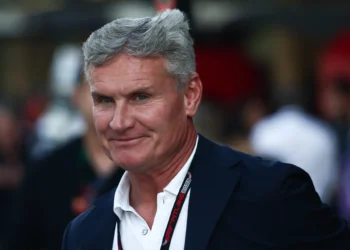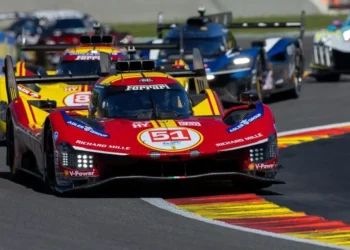Chevrolet faced a crisis after experiencing multiple issues during qualifying day for the Indy 500. On Saturday, several drivers had power issues that affected their ability to achieve competitive times. These power delivery interruptions were exclusive to drivers with Chevrolet engines, and the manufacturer confirmed that all incidents were related. Six drivers in total were affected by what Chevy refers to as a plenum fire, which occurs when pre-mixed fuel and air ignite and vaporize before entering the combustion chamber. This issue caused a momentary power loss, similar to an ignition failure, and disrupted the drivers’ race momentum.
In response to the incidents, Chevrolet held an emergency press conference to address the situation. Rob Buckner, General Motors IndyCar Program Manager, acknowledged that plenum events occasionally occur, but stated that they had not encountered issues before this year’s Indy 500. He emphasized that qualifying day is a critical moment for all involved and unexpected problems may arise. Although plenum issues arose that day, Buckner expressed confidence in quickly resolving the problem.
The first driver to be affected was Kyle Larson, who had to abandon his race after just three laps due to a plenum fire. Later on the same day, five other drivers, including Pato O’Ward, Conor Daly, Ed Carpenter, Christian Rasmussen, and Agustin Canapino, experienced the same fate. Chevrolet immediately took steps to mitigate the disaster and activated its testing centers worldwide to identify the issue. Jim Campbell, GM’s VP of Performance and Motorsports, assured that the engines remained intact and that the company would work overnight to find a solution and improve controls and calibrations for the next day.
Campbell also mentioned that the increased boost pressure used for Indy 500 qualifying, 1.5 bar instead of the usual 1.3 bar, contributed to the problems. Since real-world testing is not conducted at higher turbocharger pressures, Chevy relies on test data to detect issues before they become critical. Although plenum fires had been discussed before, they did not impact results as significantly as they did on Saturday. Interestingly, Chevrolet engines demonstrated impressive power delivery in the higher boost setting used exclusively for Indy 500 qualifying, with the four fastest drivers using Chevy engines. However, this offers little consolation to the affected drivers during Saturday’s session, who hope that the manufacturer will identify and resolve the issue to prevent further disruptions.
Unlike Chevrolet, Honda, the other engine manufacturer in IndyCar that powers approximately half of the field, is not believed to have the same type of issue.









